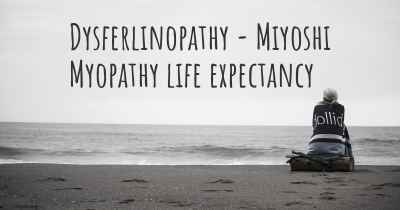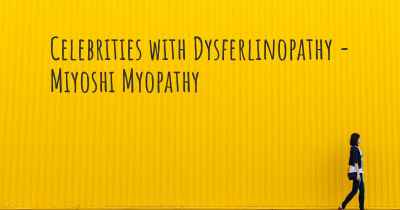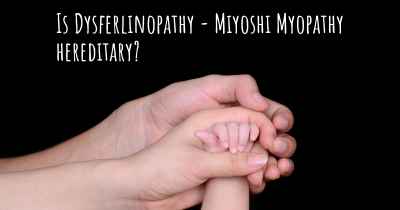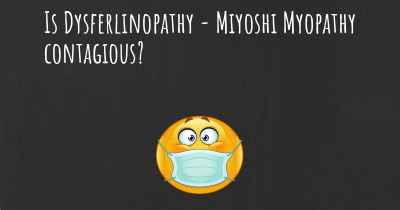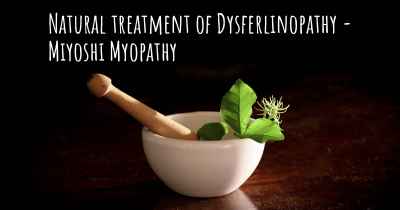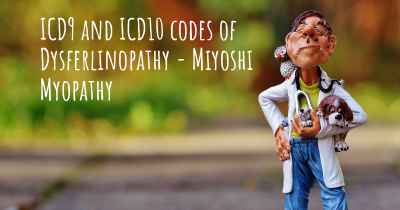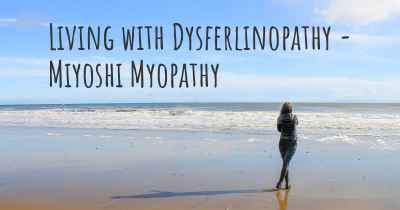Which advice would you give to someone who has just been diagnosed with Dysferlinopathy - Miyoshi Myopathy?
See some advice from people with experience in Dysferlinopathy - Miyoshi Myopathy to people who have just been diagnosed with Dysferlinopathy - Miyoshi Myopathy
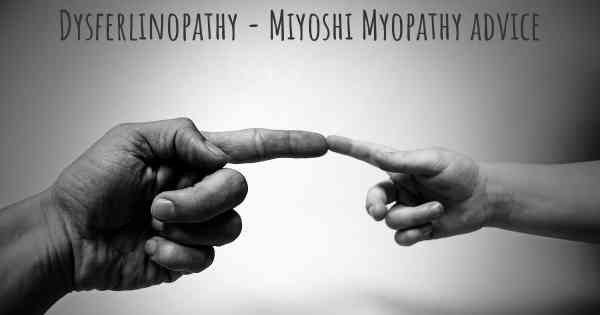
Dysferlinopathy - Miyoshi Myopathy: Advice for Newly Diagnosed Individuals
Receiving a diagnosis of Dysferlinopathy, specifically Miyoshi Myopathy, can be overwhelming and bring about a range of emotions. It is important to remember that you are not alone in this journey. While there is currently no cure for Dysferlinopathy, there are various strategies and resources available to help manage the condition and improve your quality of life. Here are some essential pieces of advice to consider:
1. Seek Support:
Reach out to support groups, organizations, and online communities that specialize in Dysferlinopathy or Miyoshi Myopathy. Connecting with others who share similar experiences can provide emotional support, valuable insights, and a sense of belonging. These communities can also offer practical advice on managing symptoms, accessing resources, and navigating the healthcare system.
2. Educate Yourself:
Take the time to learn about Dysferlinopathy and Miyoshi Myopathy. Understanding the condition, its symptoms, progression, and available treatments can empower you to make informed decisions about your healthcare. Stay updated on the latest research and advancements in the field, as new treatments and therapies may become available in the future.
3. Build a Healthcare Team:
Collaborate with a team of healthcare professionals who specialize in neuromuscular disorders. This team may include neurologists, physical therapists, occupational therapists, genetic counselors, and other specialists. Regular check-ups and consultations with these experts will help monitor your condition, manage symptoms, and provide guidance on maintaining your overall well-being.
4. Develop a Management Plan:
Work with your healthcare team to create a personalized management plan that addresses your specific needs and goals. This plan may include strategies for managing muscle weakness, maintaining mobility, preventing falls, and optimizing your overall physical and mental health. Regular exercise, physical therapy, and assistive devices may be recommended to help manage symptoms and maintain muscle strength.
5. Prioritize Self-Care:
Take care of yourself both physically and emotionally. Engage in activities that bring you joy and relaxation. Practice stress management techniques such as meditation, deep breathing exercises, or engaging in hobbies that help you unwind. Prioritize sleep, eat a balanced diet, and maintain a healthy lifestyle to support your overall well-being.
6. Access Available Resources:
Explore the resources and support services available to individuals with Dysferlinopathy and their families. These may include financial assistance programs, disability benefits, educational resources, and assistive technology. Organizations specializing in neuromuscular disorders can provide guidance on accessing these resources and navigating the administrative processes.
7. Communicate Openly:
Effective communication with your healthcare team, family, and friends is crucial. Share your concerns, questions, and goals openly to ensure that everyone is on the same page. This open dialogue will help you receive the support you need and allow your loved ones to better understand your condition and how they can assist you.
8. Stay Positive and Seek Mental Health Support:
Living with a chronic condition can be challenging, both physically and emotionally. It is important to maintain a positive mindset and seek professional mental health support if needed. Therapists or counselors can help you navigate the emotional aspects of your diagnosis, cope with any anxiety or depression, and develop strategies for maintaining a positive outlook.
9. Stay Informed About Clinical Trials:
Stay updated on ongoing clinical trials and research studies related to Dysferlinopathy and Miyoshi Myopathy. Participating in clinical trials can provide access to potential new treatments and contribute to advancing scientific knowledge about the condition. Discuss with your healthcare team whether participating in a clinical trial is a suitable option for you.
10. Connect with Patient Advocacy Groups:
Engage with patient advocacy groups and organizations dedicated to Dysferlinopathy and Miyoshi Myopathy. These groups often provide valuable resources, research updates, and opportunities to participate in advocacy efforts. By joining these communities, you can contribute to raising awareness, supporting research, and advocating for improved care and treatment options.
Remember, while a diagnosis of Dysferlinopathy - Miyoshi Myopathy may present challenges, it does not define you. With the right support, management strategies, and a positive mindset, you can lead a fulfilling life and make the most of each day.
